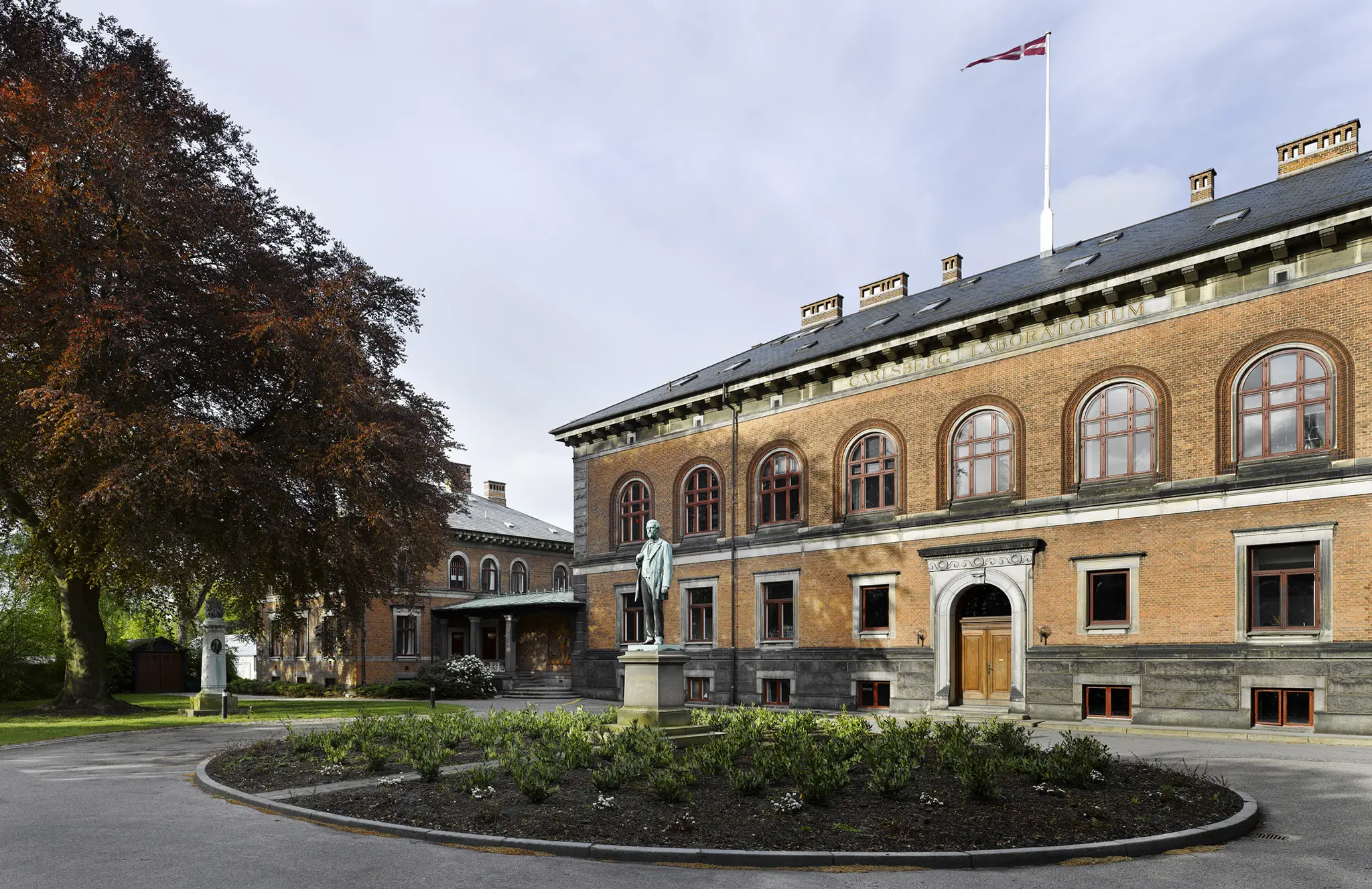
Carlsberg Research Laboratory
Published:
01.05.2024
The Carlsberg Research Laboratory is an internationally acclaimed research institution. Over the years, the laboratory has delivered ground-breaking research results and revolutionised modern beer brewing. Today, the laboratory is part of Carlsberg A/S, and the Carlsberg Foundation has been supporting its research since 1876.
Ever since the Carlsberg Research Laboratory was established, its purpose has been to develop beer of the highest possible quality and thereby provide a model for brewing in Denmark and the rest of the world.
“In working the breweries it shall be a constant purpose, regardless of immediate profit, to develop the art of making beer to the highest possible degree of perfection in order that these breweries and their products may ever stand as ideal models and so, by their examples, assist in keeping the brewing of beer in this country at a high and honourable level.”
The Carlsberg Research Laboratory’s purpose thus clearly evokes the Golden Words expressed in J.C. Jacobsen’s will and inscribed above the entrance gate to the old brewery, not far from the laboratory.
Four main areas
Today, the Carlsberg Research Laboratory is actively working to develop new possibilities within brewing and biotechnology. The research is focused on four main areas:
- Raw materials
Research focused on raw materials for brewing, primarily aimed at improving barley and hops - Yeast and fermentation
Research focused on microorganisms for brewing, primarily aimed at improving yeast strains - New ingredients
Research focused on new ingredients and natural substances, and their use in cereal-based and other beverages - Brewing research, technology and quality
Research focused on improving brewing processes, including enzyme usage, product quality, improved measuring and monitoring methods, and sustainable solutions
It was J.C. Jacobsen’s wish that the laboratory’s knowledge should be made freely available to the outside world. In that spirit, the laboratory’s research results today are published and thus made accessible to the public.
Fermentation physiologist Emil Chr. Hansen, Director of the Carlsberg Research Laboratory from 1842 to 1909, developed a method for culturing pure yeast that revolutionised industrial beer production.
From the Carlsberg Research Laboratory.
Hops from the laboratory’s adjacent greenhouses.
Among other things, the Carlsberg Research Laboratory conducts research into barley and hops to ensure optimal raw materials for beer production.

In brief
Even as a young brewer, J.C. Jacobsen, founder of Carlsberg and the Carlsberg Foundation, was keen to acquire the latest knowledge. He was inspired by the lectures of physicist and chemist H.C. Ørsted and quickly came to understand how scientific discoveries had increased productivity and quality within a large number of industries. J.C. Jacobsen believed that the same could be true for brewing. Later, he visited brewing colleagues all over Europe, sharing experiences and bringing back new knowledge and inspiration to Carlsberg.
J.C. Jacobsen was convinced that understanding the chemistry of beer and the physiology of the organisms involved was essential if the quality of beer was to be improved. In 1875, he therefore established the Carlsberg Research Laboratory, attached to the Carlsberg Brewery.
With a number of ground-breaking research results, the Carlsberg Research Laboratory quickly became a key factor in the success of the brewery and a model for modern beer production as well as other knowledge-intensive industries and science in general.
Director and fermentation physiologist Emil Chr. Hansen and his employees at the Carlsberg Research Laboratory in 1898.
Affiliated to the Carlsberg Foundation
In organisational terms, the Carlsberg Research Laboratory is part of Carlsberg A/S. The laboratory is closely affiliated to the Carlsberg Foundation and referred to as department A in the foundation’s charter. The Carlsberg Foundation has thus been supporting the Carlsberg Research Laboratory’s work since 1876.
The Carlsberg Research Laboratory receives a fixed 8 percent of the Carlsberg Foundation’s total grants in each financial year.
The Carlsberg Research Laboratory is managed by a Director of Research employed by Carlsberg A/S. A board of trustees, appointed by the Carlsberg Foundation’s board of directors and the Royal Danish Academy of Sciences and Letters, is responsible for overseeing the grants awarded by the Carlsberg Foundation in line with its charter, and for publishing the laboratory’s research results and making them accessible to the public.
The laboratory’s management
Day-to-day management: Birgitte Skadhauge Director of Research Board of Trustees: Daniel Otzen (Chair) Professor, PhD, Interdisciplinary Nanoscience Center (iNANO), Aarhus University Member of the Board, Carlsberg Foundation Jens Hjorth Professor, MSc, PhD, Niels Bohr Institute, University of Copenhagen Member of the Board, Carlsberg Foundation Susanne Mandrup Professor, PhD, Department of Biochemistry and Molecular Biology, University of Southern Denmark Member of the Board of Directors, Carlsberg Foundation Jacob Aarup-Andersen CEO, Carlsberg Group Yves Briantais Chief Marketing Officer and member of the Executive Committee, Carlsberg Group Henrik Poulsen (observer) Chair, Carlsberg Group
Historic breakthroughs
- Culturing of pure yeast – Emil Chr. Hansen
- The Kjeldahl method – Johan Kjeldahl
- The pH scale – S.P.L. Sørensen
- Protein chemistry, dynamics and enzymes – K.U. Linderstrøm-Lang
- Genetic manipulation of yeast cells – Øjvind Winge
- Discovery of subtilisin – Martin Ottesen
- Click chemistry - Morten Meldal
- New barley sorts – Birgitte Skadhauge
- Sequencing the barley genome – Christoph Dockter
- Together Towards Zero – Arvid Garde



